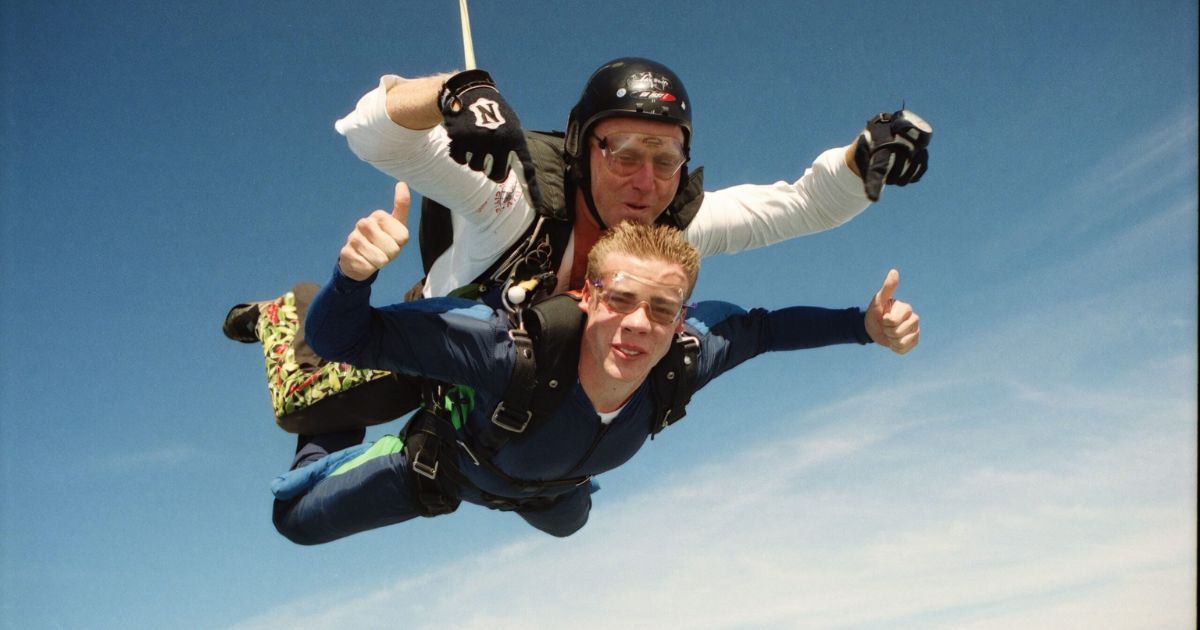Extreme sports like bungee jumping and skydiving offer heart-pounding thrills and unforgettable experiences. However, a common question among enthusiasts and first-timers alike is: Is bungee jumping or skydiving safer? To answer this, we need to look at statistical data, equipment reliability, human error factors, and expert opinions. Let’s dive into both activities and evaluate the risks involved.
Understanding Bungee Jumping
Bungee jumping involves leaping from a height (a bridge, crane, or platform) while connected to a large elastic cord. The cord stretches and recoils, preventing the jumper from hitting the ground.
According to Wikipedia, modern bungee jumping began gaining popularity in the 1980s and has since evolved into a well-regulated adventure sport.
Safety Features of Bungee Jumping
- Elastic Cord Quality: Made from rubber strands to absorb shock.
- Harness System: Attaches to the ankles or body for safety.
- Site Regulations: Certified bungee jump sites adhere to strict safety checks and procedures.
- Redundancy Systems: Some operators use backup cords for additional security.
Understanding Skydiving
Skydiving involves jumping from an aircraft at altitudes typically between 10,000 to 14,000 feet, followed by a freefall and parachute deployment.
According to Wikipedia, it originated from military training and evolved into a civilian sport in the mid-20th century.
Safety Features of Skydiving
- Main and Reserve Parachutes: In case the primary chute fails, a backup is used.
- Automatic Activation Devices (AADs): Deploys the reserve parachute automatically at a specific altitude if the jumper hasn’t deployed it manually.
- Rigorous Training: Beginners undergo extensive ground training before jumping.
- Professional Tandem Instructors: First-timers jump while attached to a certified expert.
Comparing the Risks
Let’s evaluate the question “is bungee jumping or skydiving safer” by comparing statistics and expert insights.
1. Fatality Rate Comparison
- Skydiving: According to the United States Parachute Association (USPA), in 2022 there were 10 fatal skydiving accidents out of approximately 3.9 million jumps, yielding a fatality rate of 0.00026%.
- Bungee Jumping: While exact global statistics are harder to aggregate, research and anecdotal data suggest a fatality rate of 1 in 500,000 jumps or 0.0002%.
Conclusion: Bungee jumping has a slightly lower fatality rate than skydiving, although both sports are considered very safe when proper procedures are followed.
Factors That Affect Safety
1. Equipment Reliability
Both sports rely heavily on well-maintained and tested equipment. Skydiving requires more mechanical components (parachutes, altimeters, AADs), whereas bungee jumping primarily relies on the condition of the cord and harness.
- Bungee cords are replaced regularly due to wear and tear.
- Skydiving parachutes are inspected before every jump and packed by certified riggers.
2. Weather Conditions
Weather plays a crucial role in safety:
- Skydiving can be dangerous in high winds, rain, or low visibility.
- Bungee Jumping is affected less by weather, although strong winds or rain may lead to cancellations.
3. Human Error
Most accidents in both sports occur due to human error:
- Improper rigging.
- Misjudged timing (especially in skydiving).
- Not following instructions.
However, the rigorous training and safety protocols in place significantly reduce these risks.
Medical Considerations
Both activities place physical stress on the body, but the type of stress varies.
- Bungee Jumping involves rapid acceleration and deceleration, which can cause eye injuries, neck strain, or increased blood pressure. It’s not advised for people with heart problems or high blood pressure.
- Skydiving is less jarring but can be mentally overwhelming. People with heart conditions or a fear of heights should consult a doctor beforehand.
In both cases, physician clearance is recommended if you have underlying health issues.
Psychological Safety: The Fear Factor
Many people associate skydiving with higher fear levels because of the altitude. Jumping out of an aircraft feels more unnatural than leaping off a platform with a visible surface below.
- Skydiving: Involves a longer adrenaline rush due to freefall.
- Bungee Jumping: Has a shorter but sharper burst of adrenaline when you leap and bounce.
Some studies suggest that bungee jumping causes more intense short-term fear, while skydiving has a longer period of anticipation and fear management.
Training and Accessibility
Bungee Jumping:
- Minimal training needed.
- Usually completed in one session with a quick briefing.
- Good for spontaneous adventure seekers.
Skydiving:
- Requires more commitment, especially if doing solo jumps.
- First-time jumpers do tandem jumps with professionals.
- Solo licenses require extended training (AFF courses, etc.).
Verdict: If you want a quick adrenaline rush without prolonged preparation, bungee is easier to access.
Regulatory Oversight and Certification
- Skydiving is governed by national and international bodies like the USPA, British Parachute Association (BPA), and Fédération Aéronautique Internationale (FAI).
- Bungee Jumping operations vary by country but often follow ISO safety standards and require annual inspections and certifications.
You can verify the legitimacy of both providers by checking their affiliations and certifications.
Which One Should You Choose?
Here’s a simplified comparison to help you decide:
| Criteria | Bungee Jumping | Skydiving |
|---|---|---|
| Fatality Rate | Slightly safer | Very safe |
| Training | Minimal | Extensive |
| Duration of Experience | Short | Long |
| Physical Impact | High | Moderate |
| Weather Dependency | Less | More |
| Fear Factor | High intensity | Longer build-up |
Final Verdict
So, is bungee jumping or skydiving safer? Statistically, both are incredibly safe when operated by trained professionals and performed with certified equipment. Bungee jumping appears to have a marginally lower fatality rate, but skydiving offers more structured training, redundancy systems, and international regulation.
Your personal preference, health condition, and comfort with heights should guide your choice. If you want a short, sharp thrill with fewer requirements, go for bungee jumping. If you want a more immersive, scenic adventure with a long freefall, skydiving is the way to go.




